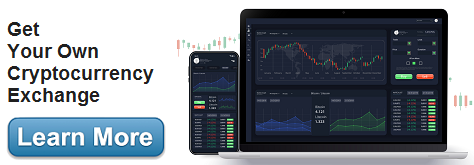Why AI Trading is Critical in Today’s Environment?
- August 29, 2023
- Jennifer Moore

The NASDAQ exchange has a significant role in global finance. But it avoids the use of AI-powered trading tools. Thus, it is causing traders and brokers to miss opportunities. Let’s explore why it should embrace AI-powered insights and trading tools. We will also discuss the advantages of algorithmic trading. Given these points, we will also focus on traders’ challenges, market manipulation, and financial exclusion.
AI Trading Insights: Creating a Difference
Despite the potential benefits, many exchanges remain hesitant to embrace AI-powered trading tools. It is due to concerns about their reliability and potential for misuse. This approach denies retail traders access to the same opportunities as institutional investors. The latter are already using these tools to their advantage.
Human Emotions and Investment Decisions
Investing can be a daunting task, with many factors to consider. One of the most significant factors that can impact investment decisions is in essence emotions.
- Emotional intelligence helps investors to stay focused on their long-term goals. It avoids impulsive decisions based on short-term market movements.
- In investing, self-awareness helps investors to identify their own biases and emotional triggers. It can help them make more informed investment decisions.
- Empathy can help investors to understand the emotions of other market participants. It can be useful in predicting market movements. Furthermore, it can also help investors to make more ethical investment decisions. They will consider the impact of their investments on others.
- In investing, social skills can help investors to network. It helps build relationships with other investors. It can provide valuable insights and opportunities.
Investors often make irrational choices as a result of their emotions. It may result in sizable losses. Investment choices can indeed alter with anxiety, greed, and excessive optimism. Investors have a compulsion to buy or sell at the perfect time. It leads to rash decisions resulting in losses. Confirmation bias occurs when investors look for information that supports their views. They ignore contrary evidence. Lastly, it can also have an impact on these choices.
AI Trading Features in the Stock Markets
On the other side, AI-powered technology remains unaffected by human emotion or prejudice. They make decisions completely based on data. Thus, over time, it results in more reliable performance. As a result, trading tools and insights powered by AI undeniably have a distinct edge over human traders.
-
Greater Efficiency
AI-powered insights and trading tools offer faster and more accurate market data analysis. It increases efficiency and reduces costs.
-
Better Trading Decisions
With AI algorithms, traders can make informed decisions based on real-time market data. For this purpose, it reduces the impact of human emotions and biases.
-
Improved Risk Management
AI-powered tools can analyze risk factors and make predictions. It allows traders to manage risks better.
-
Competitive Edge
As other exchanges adopt AI-powered tools, NASDAQ risks falling behind its competitors.
The NASDAQ exchange has a responsive client-facing support system. However, its brokerage platform is deficient in cutting-edge features available on contemporary exchanges. The non-institutional traders are not enjoying the use of AI technology by institutions.
Also Read: NASDAQ must boost financial inclusion for Brokers
AI Trading Instances
Here’s an overview of how institutional investors use AI and their success:
-
Citadel Securities
Citadel Securities uses AI and machine learning to analyze massive amounts of data. It also uses them to identify trading opportunities. They use deep learning algorithms to process data. They made predictions about future market movements. Take Citadel Securities’ investment in a startup called Kensho for an example. It uses AI to analyze market data and generate investment insights. This has resulted in significant returns. In 2018, Citadel Securities was responsible for over 13% of all US equity trading volume. This is a testament to the success of their AI-powered trading strategies.
-
Goldman Sachs Asset Management
Goldman Sachs Asset Management (GSAM) uses AI to enhance its investment research. It also uses AI for portfolio management capabilities. The firm’s Quantitative Investment Strategies (QIS) team evidently uses machine learning algorithms. Above all, the algorithms identify trading opportunities and optimize investment portfolios. For example, GSAM’s QIS team used AI and machine learning. They analyze news headlines and social media activity to identify trends. Furthermore, they also generate investment insights. The team’s AI-powered investment strategies outperformed the markets for the most part. The Goldman Sachs ActiveBeta® US Large Cap Equity ETF (GSLC) returns overperformed the S&P 500.
-
J.P. Morgan Asset Management
J.P. Morgan Asset Management (JPMAM) uses both AI and machine learning. Secondly, they optimize investment portfolios and generate investment insights. The firm’s QIS team uses machine learning algorithms. They identify both trading opportunities and manage risk. For example, JPMAM’s QIS team uses AI. It analyzes data from financial statements, news articles, and social media. It identifies trends and generates investment ideas. In brief, JPMAM’s AI-powered investment strategies have always outperformed the market. The JPMorgan Diversified Return US Equity ETF (JPUS) returns have always beaten the S&P 500.
-
BlackRock
BlackRock uses both AI and machine learning. They also enhance its investment research, portfolio management, and trading capabilities. The firm’s Systematic Active Equity (SAE) team uses machine learning algorithms. They identify trading opportunities and manage risk. BlackRock’s SAE team uses AI. It analyzes data from financial statements, news articles, and social media. They help identify trends and generate investment ideas. BlackRock’s AI-powered investment strategies have always outperformed the market. The iShares Edge MSCI USA Momentum Factor ETF (MTUM) delivers returns, always beating the S&P 500.
-
Vanguard
Vanguard uses both AI and machine learning. They markedly enhance both their investment research and portfolio management capabilities. The firm’s Quantitative Equity Group uses machine learning algorithms. They identify trading opportunities and manage risk. For example, Vanguard’s Quantitative Equity Group uses AI to analyze financial data. It evidently identifies undervalued companies. Vanguard’s AI-powered investment strategies have always outperformed the market. The Vanguard Information Technology ETF (VGT) returns always beat the Nasdaq Composite Index.
Algo Trading: Maximizing Returns Across Transactions
With every day that goes by, trading programs, or algos, gain more and more importance. These advanced computer programs analyze market data. They autonomously place trades and provide information for placing trades. Institutional investors often use algorithmic trading.
What is Algo Trading?
Algorithmic trading includes the use of artificial intelligence and mathematical modeling. Basically, it reaches decisions based on current data. Greater autonomy and control across trades are possible with computerized trading algorithms. They are customizable to each trader’s specific risk preferences. Traders can monetize from market changes at any moment with the algorithms’ ability to run 24/7.
Advantages of Algo AI Trading
Algo trading as a tool offers several benefits for traders. They offer both speed and customization. Other main advantages of algo trading are
-
Eliminates Human Emotions
Algorithmic trading eliminates the emotional factor. It minimizes the chances of making impulsive decisions.
-
Increased Efficiency
Algo trading enables the execution of large orders at a faster speed. It thereby increases efficiency.
-
Consistent Execution
Algo trading guarantees both consistent execution and minimizes slippage and errors.
-
Backtesting and Optimization
AI-powered trading tools allow for both backtesting and optimization. It enables traders to both test strategies and fine-tune algorithms.
Gatekeeping Framework Limits Access Boosting Financial Exclusion
NASDAQ’s gatekeeping framework can pose significant problems, particularly for non-institutional brokers.
High Membership Fees
The cost of becoming a NASDAQ member is expensive for non-institutional brokers. The membership fees can overall range anywhere from $5000 to $500,000. There are several other charges and an opaque pricing structure. It is thus difficult for smaller brokers to enter the market.
Lengthy Enlistment Process
The enlistment process for NASDAQ can be time-consuming. By and large, there is at least a 6 month waiting period for broker registration. New participants need to start under institutional traders. They have to grind and work their way to the top. Thus, it is obviously difficult for smaller brokers to establish themselves as independent brands.
Exclusion of Non-Institutional Traders
NASDAQ’s gatekeeping framework legitimizes institutional traders with high asset value and membership eligibility. This causes financial exclusion of small traders who lack access to AI-powered tools. This leads to a widening gap between small and large traders.
Market Manipulation
Institutional traders have the necessary resources. Thus, they can capitalize on AI-powered insights and trading tools. This gives them an unfair advantage over the retail sector. By comparison, it allows them to manipulate the markets as per their requirements. Thus, it results in retail sector losses, which get converted to institutional profits.
Preferential Discrimination
There was penalization for illicit and unethical activities. Yet, the NASDAQ broker model has not changed its gatekeeping framework. In contrast, the offenders and insider traders were neither stripped of their membership status. This lack of regulations leads to discrimination and further exclusion of non-institutional traders.
Use of AI Trading in Market Manipulation
Institutional dealers can take advantage of AI-powered insights and trading tools. Eventually, this gives them an edge over individual traders. They can manipulate the market to their advantage. They can further turn consumer losses into profits for the company. Institutional investors have used these tools for illegal trading practices in the past. Here are a few instances:
JPMorgan Chase
JPMorgan Chase engaged in manipulative trading practices using AI-powered algorithms. In 2020, it agreed to pay $920 million to settle charges. The Securities and Exchange Commission (SEC) found that it used AI to engage in “spoofing.” It involves placing orders to buy or sell stocks with the intent to cancel them before they get executed. The bank also engaged in other manipulative trading practices using AI.
Renaissance Technologies
Renaissance Technologies, a hedge fund, uses AI and machine learning tools for trading. It got fined $122 million by the SEC for engaging in improper trading practices in 2019. The SEC found that Renaissance Technologies used AI to engage in “wash trading.” It involves buying and selling securities to create the appearance of market activity. The hedge fund also engaged in other manipulative trading practices using AI.
Two Sigma Investments
Two Sigma Investments is a hedge fund. It uses AI and machine learning tools for trading. It was fined $1.2 million by the Financial Industry Regulatory Authority (FINRA) in 2014. Two Sigma used AI to engage in “layering.” It involves placing a significantly large number of orders with the intent to cancel them before they get executed. The hedge fund also engaged in other manipulative trading practices using AI in addition to the ones mentioned above.
AI Trading: Triggering Change Through Innovation
The broker models have to change to bring global development and financial inclusion. Conventional exchange broker platforms surely need to be upgraded. It should innovate its existing systems to offer equal opportunities to all traders.
NASDAQ should take the following steps to undo the damages.
-
Upgrade and Integrate AI into its Existing Broker Model
The exchange should upgrade its broker platform. It should integrate modern features such as Data Engines. These can provide market insights that are not only accurate but also customizable according to the user’s risk appetite. NASDAQ should evolve and innovate its platform to stay ahead of the competition. It should incorporate modern features like AI-enabled insights. It should also offer algo trading options across both the Buy and Sell side. NASDAQ should offer algo trading options across both the buy and sell sides. It should in addition offer trading bots that can be set up within minutes. Investors should be able to customize their bots or assign bot options set by expert traders.
-
Use Cloud-based Brokerage as a Service (BaaS) to Save Time and Money
Cloud-centric brokerage platforms can enhance financial inclusivity. It provides brokers with affordable, intuitive, and immediate access to brokerage services. NASDAQ should enhance financial inclusivity for brokers in the digital age. Embracing Brokerage as a Service (BaaS) can reduce the complexities. It can end problems in coding, server hosting, and other technical components.
-
Contemplate Decreasing Setup Expenses to Break down Entry Barriers
To entice novice traders, NASDAQ should decrease setup expenses. Thus, it breaks down entry barriers. It should welcome diverse competitors to the platform. It can infuse fresh ideas and strategies into the market by attracting new traders. NASDAQ can also welcome diverse competitors to the platform.
Modern exchange platforms can offer instantaneous brokerage services. The charges can be in reaas little as $49.99 per month. Technological advances have also sped up the registration process. For example, exchanges like PayBitoPro complete the process within a few minutes.
-
Boost Financial Inclusion and Brokerage Democratization by Lowering Costs
Traditional broker platforms should focus on scalable brokerage services and financial inclusivity. Basically, it should lower costs, relax eligibility criteria, and streamline operational difficulties. By democratizing brokerage services, they can foster impartiality, clarity, and greater regulatory supervision. NASDAQ needs to relax the eligibility criteria and streamline operational difficulties.
-
Introduce White-Label Broker Solutions
Exchanges can offer aspiring brokerage entrepreneurs and firms white-label broker solutions. They should provide free trials, customization, and self-branding capabilities in due time. This will help aspiring brokerage entrepreneurs and firms build independent brokerage enterprises. These solutions can empower entrepreneurs and firms to build independent brokerage enterprises.
-
Embrace AI Trading and Real-time Data to Obstruct Insider Trading
One can detect and prevent insider trading with advanced algorithms and ML models. Consequently, NASDAQ should enhance regulatory supervision, and foster impartiality and clarity. This also fosters impartiality and clarity. Thus it helps make the market transparent and fair for all participants. AI-powered trading and real-time data can improve the market’s integrity and trustworthiness.
Looking Forward: The Future of AI Trading
In summary, AI-powered insights and tools are a necessity for a trader in today’s environment. NASDAQ’s slow adoption of these tools is hindering financial inclusion. It is thereby limiting opportunities for small and medium traders. An open culture of brokerage firms is therefore crucial for an inclusive and fair financial system. It should also reduce entry barriers, and introduce AI-powered insights and tools. With these steps, it is possible to pave the way for a more accessible and fair financial system. Such a system will benefit all traders for the most part.
Categories
- AI (9)
- Altcoins (10)
- Banking (10)
- Bitcoin (133)
- Bitcoin ETF (11)
- Bitcoin Price (30)
- Blockchain (49)
- Brokering World Hunger Away (16)
- Business (9)
- CBDC (11)
- COVID-19 (3)
- Crypto ATMs (1)
- Crypto Banking (17)
- Crypto Bill (1)
- Crypto business owner platform (31)
- Crypto Investment (3)
- Crypto Markets (5)
- Crypto Payment (29)
- Crypto Prices (1)
- Crypto Trading (92)
- Cryptocurrency (401)
- Cryptocurrency Exchange (108)
- Data Visualization (2)
- Decentralized Finance (7)
- DeFi Payment (9)
- DEX (3)
- Digital Currency (22)
- Ethereum (2)
- FAQ (6)
- Finance (24)
- Financial Equality (4)
- Financial Freedom (8)
- Forex (24)
- ICO (2)
- Investment (11)
- Mining (3)
- News (66)
- NFTs (2)
- P2P (1)
- PayBitoPro (692)
- PayBitoPro Coin Listing (6)
- PayBitoPro Exchange (2)
- Post COVID Digital Transformation (1)
- Press Release (130)
- Privacy & Security (3)
- Real Estate (1)
- Stablecoin (4)
- Technology (14)
- Uncategorized (3)
- US Presidential Election (2)
- Utility Coin (1)
- Web3 business (3)
- Web3 Wallets (2)
- White Label Crypto Exchange (6)
Recent Posts
- Why Blockchain Education Is Key for Web3 Adoption
- Web3 Business Marketing: Building Community and Brand for Your Crypto Venture
- Why Blockchain Awareness Is Critical Before You Dive Into Web3
- Why Market Research Is the Foundation of Every Successful Web3 Business
- Start A Web3 Business: A Step-by-Step Web3 Startup Guide for Entrepreneurs





